Affiliate links on Android Authority may earn us a commission. Learn more.
How much data does YouTube actually use?
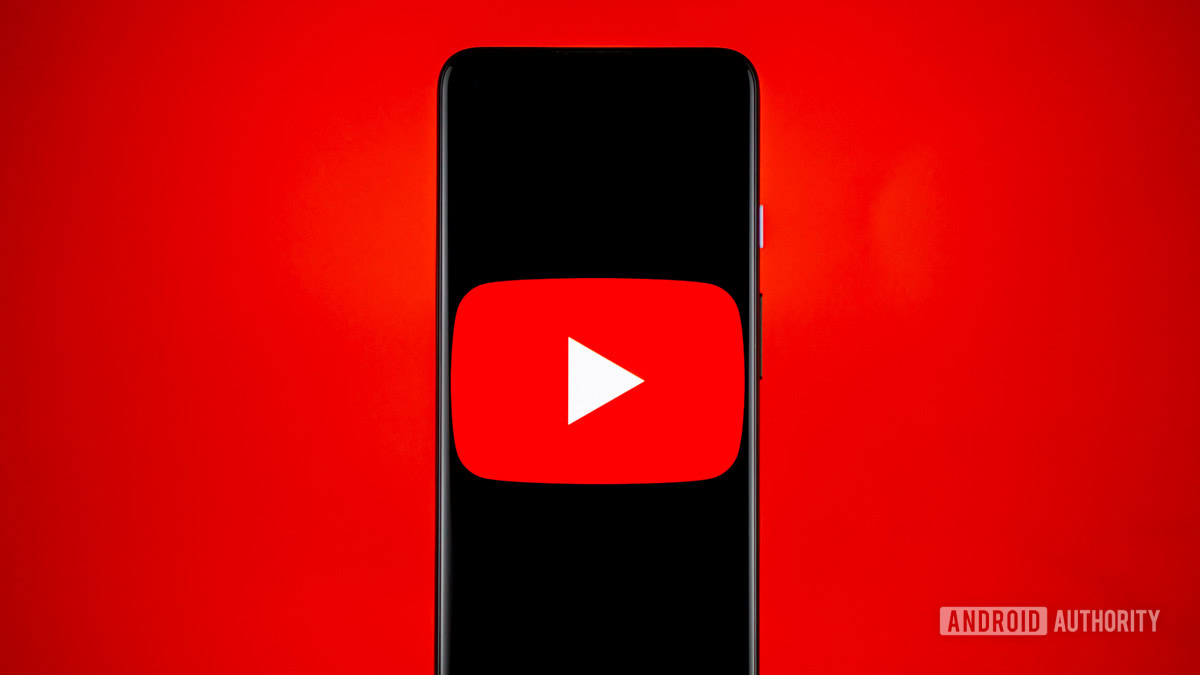
YouTube is the world’s most popular video-streaming website. It’s easy to fall down a rabbit hole and watch several videos back-to-back or even for hours at a time. Some content is good enough to watch, like a television show. Thus, it’s quite easy to rack up quite the data bill without a bit of caution. There are some correct assumptions you can make immediately. Lower-resolution videos obviously don’t use nearly as much data as higher-resolution videos. However, do you really know how much data YouTube uses? If not, we plan to tell you.
QUICK ANSWER
YouTube uses between 0.5-1.5 MB per minute at 144p and 150-375 per minute MB at 8K.
JUMP TO KEY SECTIONS
Our testing method
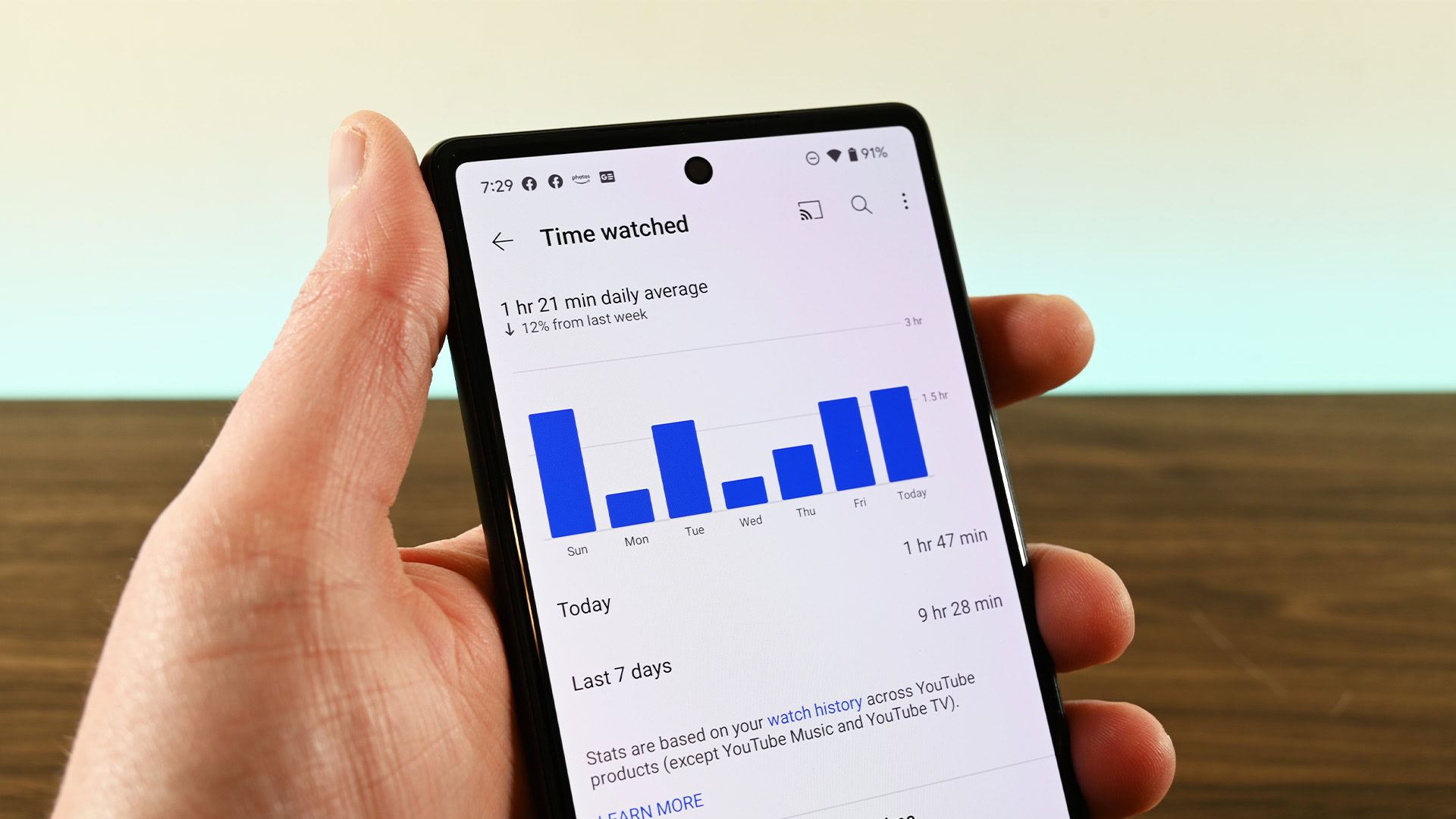
We used this 8K, 60FPS, HDR video tour of Peru because Peru is a beautiful place. But also, this video had every available resolution on YouTube at the fastest possible frame rate with HDR. We viewed the video at a locked resolution for three minutes and measured the data. Unfortunately, not all resolutions are always available on mobile. Thus, for 8K, we used the Windows data monitor along with GlassWire’s PC client and averaged the results.
We also ultimately measured all available resolutions on PC because we could and used Google’s Stats for Nerds option by right-clicking the video for the bitrate numbers. We also sourced YouTube’s bitrate recommendations since they likely encode videos in those birates anyway.
There were some troubles. The PC I used had no problem playing the 8K videos. However, my monitor doesn’t support HDR, so I don’t believe I saw the maximum possible bitrates for 8K. Until we do further testing, our 8K numbers are estimates.
YouTube data usage, by the numbers
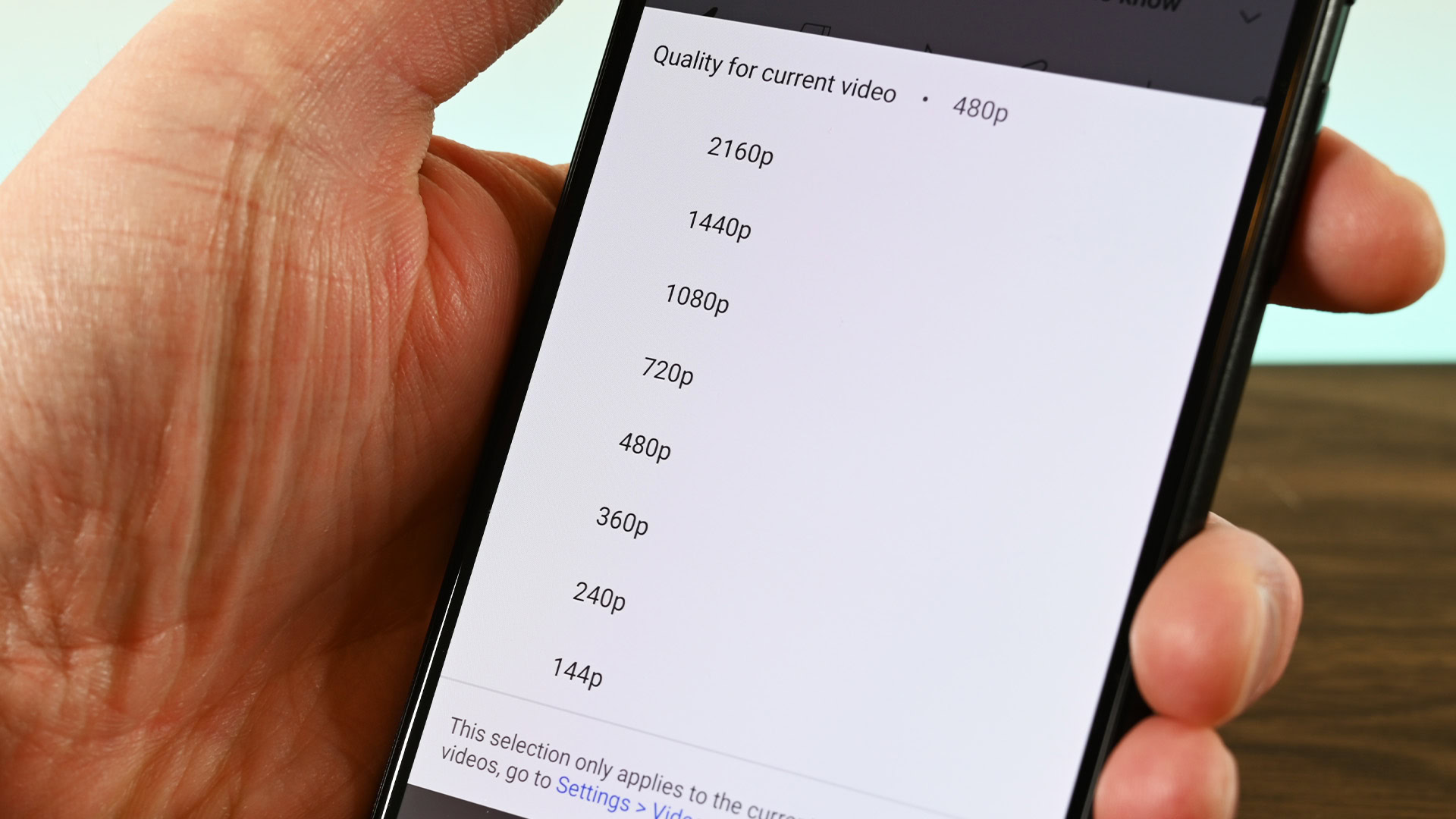
| Video Quality | Resolution (pixels) | Framrate (FPS) | Bitrate (average) | Data used per minute | Data used per 60 minutes |
|---|---|---|---|---|---|
| Video Quality 144p | Resolution (pixels) 256x144 | Framrate (FPS) 30 | Bitrate (average) 80-100 Kbps | Data used per minute 0.5-1.5 MB | Data used per 60 minutes 30-90 MB |
| Video Quality 240p | Resolution (pixels) 426x240 | Framrate (FPS) 30 | Bitrate (average) 300-700 Kbps | Data used per minute 3-4.5 MB | Data used per 60 minutes 180-250 MB |
| Video Quality 360p | Resolution (pixels) 640x360 | Framrate (FPS) 30 | Bitrate (average) 400-1,000 Kbps | Data used per minute 5-7.5 MB | Data used per 60 minutes 300-450 MB |
| Video Quality 480p | Resolution (pixels) 854x480 | Framrate (FPS) 30 | Bitrate (average) 500-2,000 Kbps | Data used per minute 8-11 MB | Data used per 60 minutes 480-660 MB |
| Video Quality 720p (HD) | Resolution (pixels) 1280x720 | Framrate (FPS) 30-60 | Bitrate (average) 1.5-6.0 Mbps | Data used per minute 20-45 MB | Data used per 60 minutes 1.2-2.7 GB |
| Video Quality 1080p (FHD) | Resolution (pixels) 1920x1080 | Framrate (FPS) 30-60 | Bitrate (average) 3.0-9.0 Mbps | Data used per minute 50-68 MB | Data used per 60 minutes 2.5-4.1 GB |
| Video Quality 1440p (QHD) | Resolution (pixels) 2560x1440 | Framrate (FPS) 30-60 | Bitrate (average) 6.0-18.0 Mbps | Data used per minute 45-135 MB | Data used per 60 minutes 2.7-8.1 GB |
| Video Quality 2160p (4k) (UHD) | Resolution (pixels) 3840x2160 | Framrate (FPS) 30-60 | Bitrate (average) 13.0-51.0 Mbps | Data used per minute 95-385 MB | Data used per 60 minutes 5.5-23.0 GB |
| Video Quality 4320p (8k) (FUHD) | Resolution (pixels) 7680x4320 | Framrate (FPS) 30-60 | Bitrate (average) 20-50 Mbps (estimated @30FPS) | Data used per minute 150-375 MB (estimated at 30FPS) | Data used per 60 minutes 9.0-22.5 GB (estimated @30FPS) |
We want to clarify the data a little bit. YouTube employs a variable bitrate. Thus, the amount of data you’ll use should fall somewhere between the high and low numbers we posted above. We understand that the difference between the low and high can vary significantly at higher resolutions. Still, a 4K video uses much less data at a lower bitrate and 30FPS than it will at 60FPS and a higher bitrate. We’re pretty confident your overall data use will fall within the applicable ranges listed above.
How to reduce data usage on YouTube
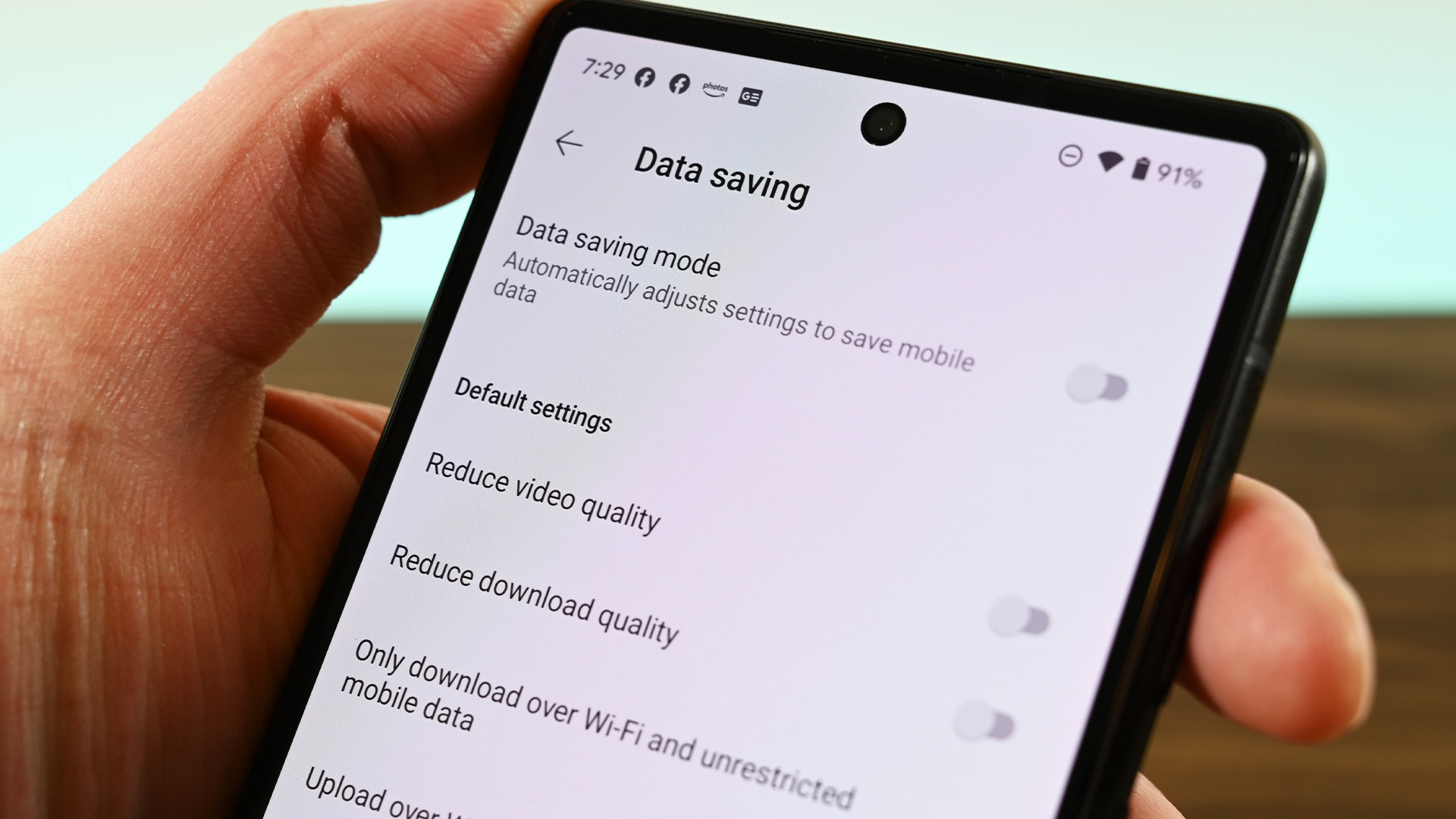
You can access this by opening the YouTube app, clicking your profile picture, and tapping Settings. From there, tap the Data saving option and turn it on. It will reduce video quality so that you use less data.
You can also access the data-saving mode while watching any YouTube video. Hit the cogwheel button, tap the Quality option, and choose the Data Saver option.
There are other ways to do it. We recommend being on Wi-Fi as often as possible so you don’t use a bunch of mobile data. You used to need a third-party data saver app to restrict usage even more. However, YouTube built a data-saving feature right into the app, so any third-party app won’t be able to do anything the main YouTube app can.
Some additional observations
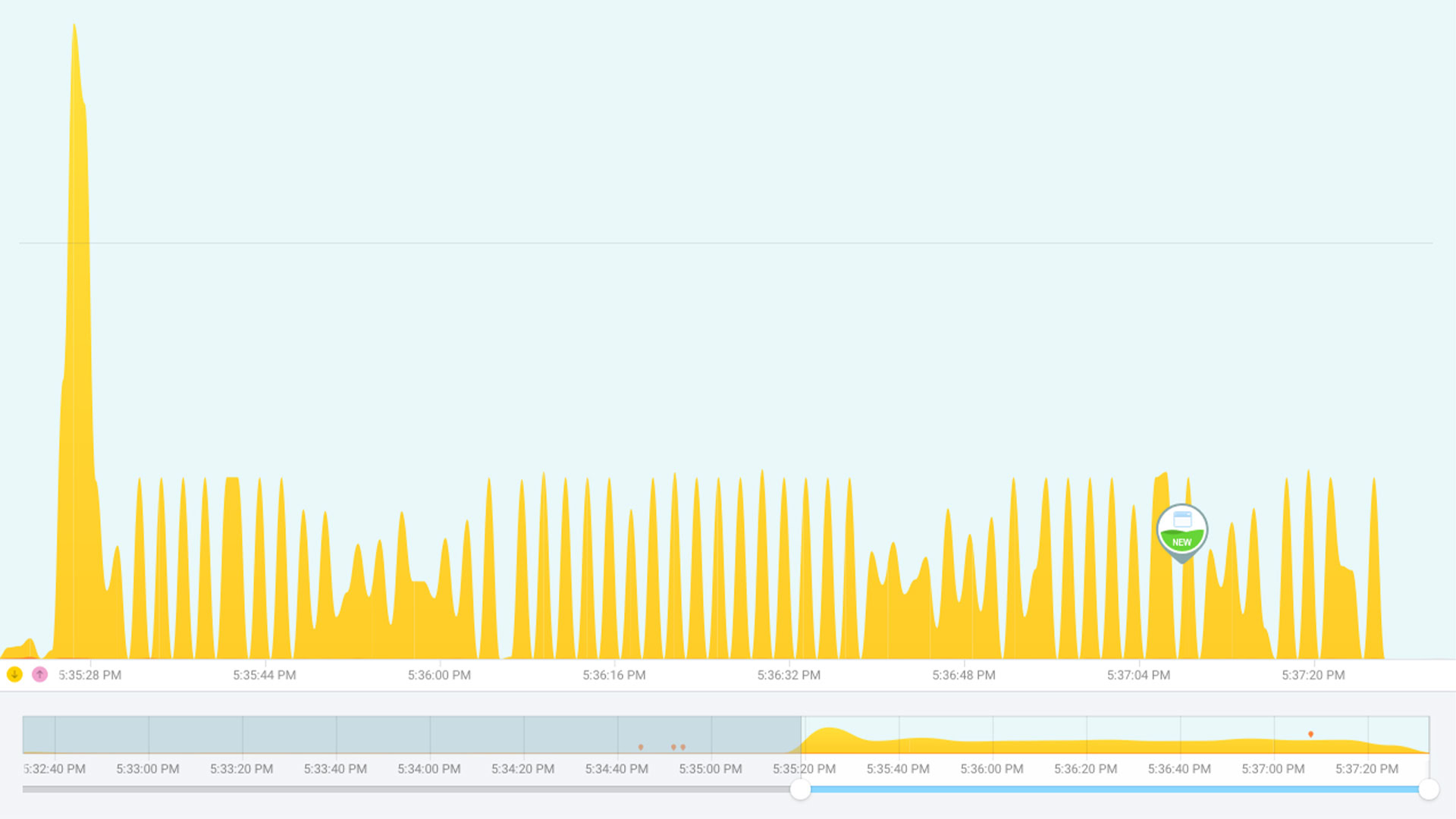
That means you loaded about one minute and 45 seconds of video, even if you only watched one minute of it. We did not correct our data for this behavior because it is outside our control. That is just how YouTube uses data. We zoomed in on a section of GlassWire’s graph while measuring the 4K video stream, and you can clearly see the big load at the beginning and the chunk loading happening later.
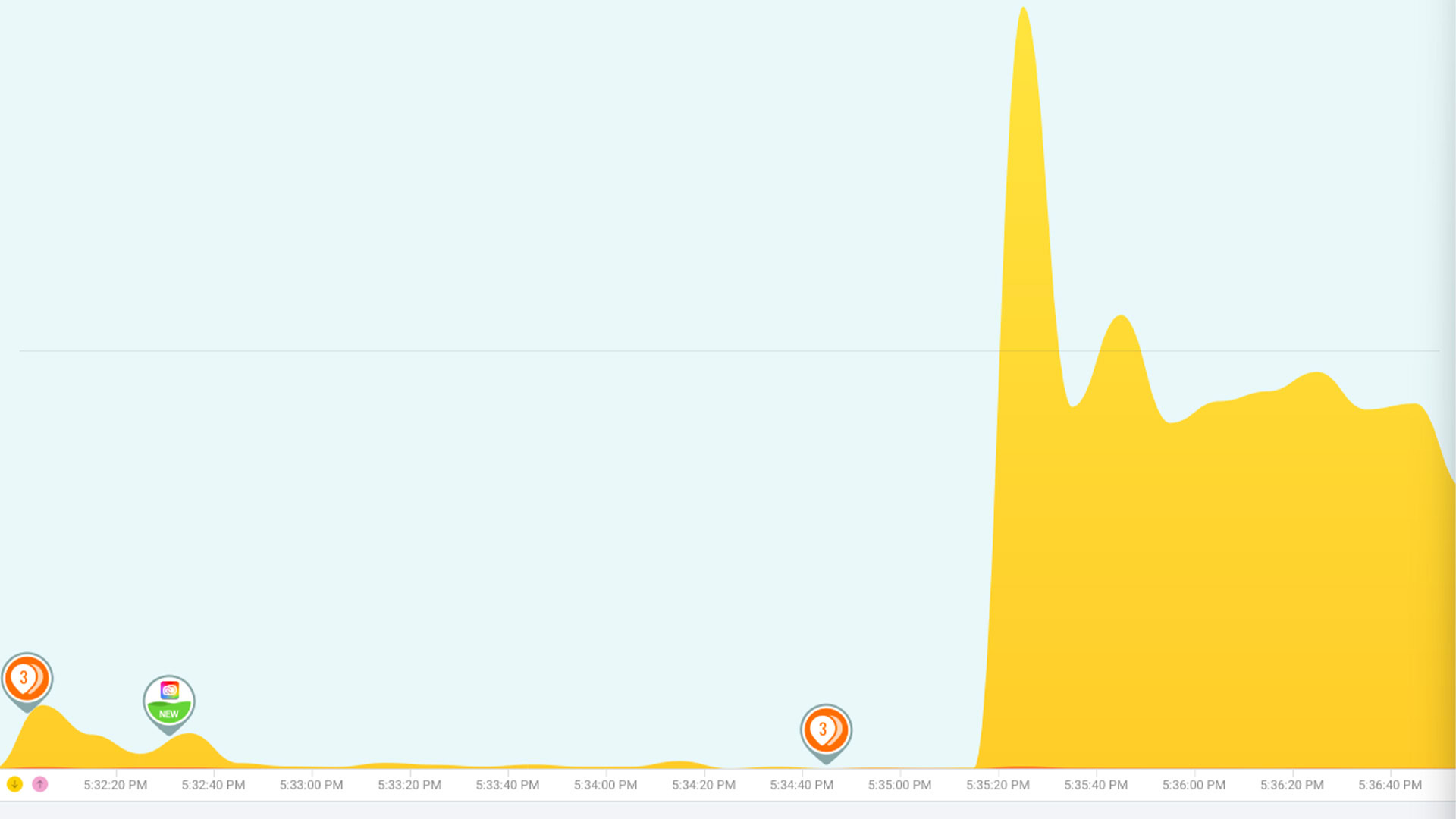
Have you ever tried to measure your YouTube data speeds? If so, please tell us your results in the comments.
FAQ
In our testing, live-streamed data uses about the same about of data as a comparably long YouTube video at the same resolution and frame rate.
Open the YouTube app, hit your profile picture, and then tap the Time Watched option. This shows you how much YouTube you’ve watched in the last week. The option below that, Your data in YouTube will show you your watch history, comment history, playlist history, etc. Additionally, every tool we use to measure YouTube data is available to you for free. Scroll up to the section about our testing methods for download links. If you’re on an iPhone, you can also check how much YouTube affects your mobile data usage.
There are two likely causes for this. The first is your YouTube app settings have every video playing at its maximum resolution and bitrate. Secondly, you just might be watching a ton of YouTube videos. It adds up faster than you might think. Try adjusting your app settings to YouTube’s data saver
The YouTube Data API offers a variety of data types, including channel details (ID, title, description, thumbnails, etc.), video data (duration, views, likes, dislikes, comments, etc.), playlist information, subscription data, search results, live broadcasting data, and captions information. The data you can access will depend on the permissions of your API key and might require user consent.
The length of video playback will depend on video resolution. For instance, 1GB of data can get up to an hour of video playback at 720p (HD) or two hours at 480p resolution on YouTube. See our chart for more details.
The amount of data that a one-hour video on YouTube will use will depend on the video resolution. For instance, a one-hour 2160p (4K) video will use at least 5.5GB of data, while a 1080p (FHD) will use at least 2.5GB of data. See our chart for more details.